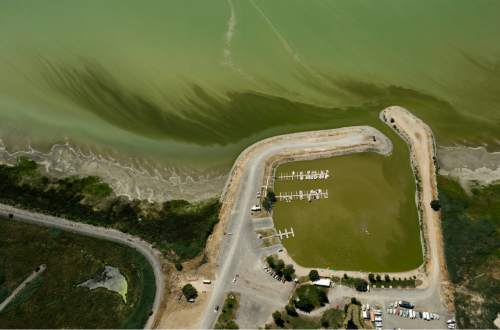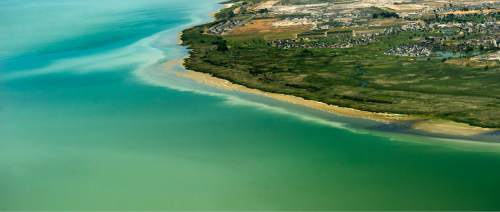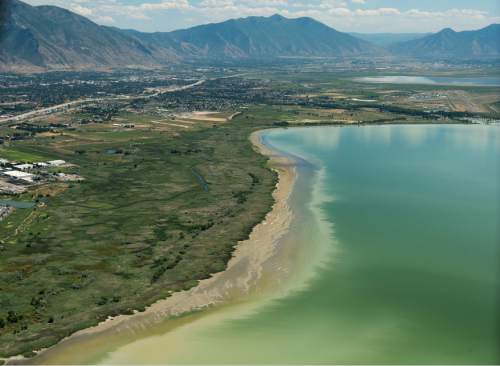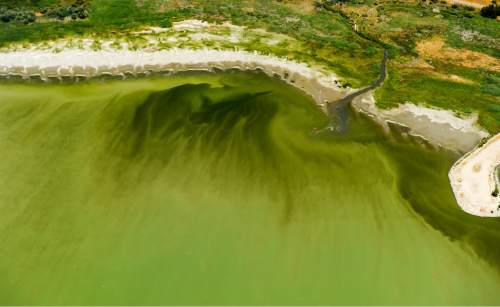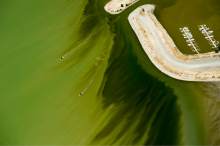This is an archived article that was published on sltrib.com in 2016, and information in the article may be outdated. It is provided only for personal research purposes and may not be reprinted.
Utah Lake's advisory was downgraded Tuesday to "caution," which opens the lake for swimming and water activities in areas without scum.
The shift comes nearly three weeks after a toxic algal bloom contaminated the body of water and limited summertime recreation in the area. The poisonous algae also spread to Jordan River and associated canals.
After health officials analyzed the lake's most recent samples, they found "the dangerous blue-green algae continues to dissipate," the Utah County Health Department said in a news release Tuesday.
But algae and scum still may be in the lake, according to Ralph Clegg, the department's executive director. Patrons are advised to avoid areas of the lake where scum is present and to keep pets and livestock away from the water.
"The lake will continue to be monitored and sampled on a regular basis," Clegg said in the news release. "If sample results show a threat to health, then we will again take the appropriate actions."
The lake was completely closed for about two weeks after health officials found concentrations of the poisonous algal cells to be three times the amount the World Health Organization considers dangerous to humans, the news release states.
The lake was reopened for boating Thursday.
People who notice any changes to the color of the water that might indicate the presence of blue-green algae can call the Division of Water Quality's tip line at 801-536-4123.
Anyone with concerns about possible human exposure to cyanobacteria — the toxin found in the lake, which can cause headache, fever, diarrhea, abdominal pain, nausea, vomiting and allergiclike reactions from the skin — is asked to call U.S. Poison Control at 800-222-1222. For concerns about animals that may have been exposed, the news release suggests contacting a local veterinarian.
Twitter: @mnoblenews


